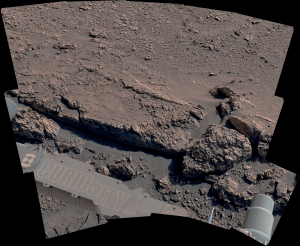Cassini Significant Event Report
For Week Ending 05/09/03
The most recent spacecraft telemetry was acquired from the Goldstone tracking station on Wednesday, May 7. The Cassini spacecraft is in an excellent state of health and is operating normally. Information on the spacecraft's position and speed can be viewed on the "Present Position" web page.
On board activities this week included Trajectory Correction Maneuver 19 (TCM-19), Probe Checkout 11, High Rate Observations, High Frequency Receiver Calibrations, an Instrument Expanded Block (IEB) exercise, and a periodic instrument maintenance all for the Radio and Plasma Wave Science instrument, uplink of IEBs for Visual and Infrared Mapping Spectrometer (VIMS), a Cosmic Dust Analyzer (CDA) absolute turn calibration, and several high water mark clears.
All activities before, during and after the TCM-19 burn executed nominally, and all telemetry was as expected. The design burn time was 17.57 seconds. The maneuver terminated with a nominal accelerometer shutdown after burning for 17.53 seconds.
TCM-19 was the first main-engine maneuver performed in over a year. The primary purpose for this 1.58 m/s blow down maneuver was to satisfy the 400-day flushing requirement of the bipropellant propulsion system. The maneuver also validated the new main-engine maneuver block to be used for tour, and the ground processes that will be used during orbital operations. The block is designed to be integrated within the tour downlink passes. The ground processes demonstrated a rapid maneuver design, and uplink of the maneuver on the same tracking pass upon which the maneuver will execute. Additionally, several Saturn Orbit Insertion (SOI) maneuver activities were demonstrated. These were 1) early closure of the main-engine cover after the burn; 2) use of both dual drive motors for cover closure; and 3) early turn-on of the oxidizer valve heater after burn termination. TCM-19 allowed an opportunity for checkout of what would otherwise be first-time events during SOI.
Probe Checkout 11 also executed nominally. Huygens personnel have received all data from the checkout, and preliminary analysis indicates that all Probe instruments are functioning as expected.
Various teams and offices supported this month's Cassini / NASA Quarterly Review.
The Spacecraft Operations Office (SCO) held a design review for the Huygens probe release scenario. The scope of the review covered the final probe-targeting maneuver through the release sequence and spacecraft attitude recovery. The board, consisting of JPL and European Space Agency personnel, approved the mission scenario and release sequence design, and identified no major issues. There were sixteen requests for further action, which will be closed during the course of the release sequence development.
An Archive Design Peer Review of the Cassini Plasma Spectrometer (CAPS), Ion and Neutral Mass Spectrometer (INMS), Magnetometer Subsystem (MAG), and Radio Detection and Ranging (RADAR) instrument team archive plans was held this week. Members of the Planetary Data System, instrument team representatives, and Instrument Operations personnel attended.
A wrap up meeting was held for Science Operations Plan (SOP) development of tour sequences S17 and S18. The sequence products have been archived until August of 2005 when the SOP Update process will begin for S17.
SOP Update V&V completed this week, on schedule. Participating teams have been queried throughout this activity for status and comments on the processes and tools. The results have been compiled and will be presented at the SOP U/D V&V wrap-up meeting next week. As part of the process, Science Planning hosted a project briefing to outline the modifications to S14, and to present Uplink Operations with a package that officially "hands over" the sequence to the Science and Sequence Update Process (SSUP).
Delivery Coordination Meetings were held for the redelivery of Mission Sequence Subsystem (MSS) D9.0 On-Board Modules, Kinematic Prediction Tool / Inertial Vector Propagator V9.0, MSS D9.0.1, and an update to the command database. The MSS D9.0.1 Delivery Coordination Meeting had been postponed one week to accommodate test and integration of a new command database Version 9D. Two errors in Composite InfraRed Spectrometer (CIRS) commands were uncovered last week while CIRS was testing their V2.0.1 flight software checkout sequence. The commands are critical to their checkout and although a workaround was possible, it was extremely arduous. SCO quickly produced an updated database, tested, and delivered it.
Cassini Outreach participated in judging High School Science Projects relating to Earth and Space Science at the Los Angeles County Science Fair, held at the LA Convention Center, and hosted an educator workshop on Cassini for 25 master teachers attending a weeklong training session in Pasadena, California.
Additional information about Cassini-Huygens is online at http://saturn.jpl.nasa.gov.
Cassini will begin orbiting Saturn on July 1, 2004, and release its piggybacked Huygens probe about six months later for descent through the thick atmosphere of the moon Titan. Cassini-Huygens is a cooperative mission of NASA, the European Space Agency and the Italian Space Agency. JPL, a division of the California Institute of Technology in Pasadena, manages the mission for NASA's Office of Space Science, Washington, D.C.
Media Relations Office
Jet Propulsion Laboratory
California Institute of
Technology
National Aeronautics and Space
Administration
Pasadena, Calif. 91109.
Telephone (818) 354-5011






























